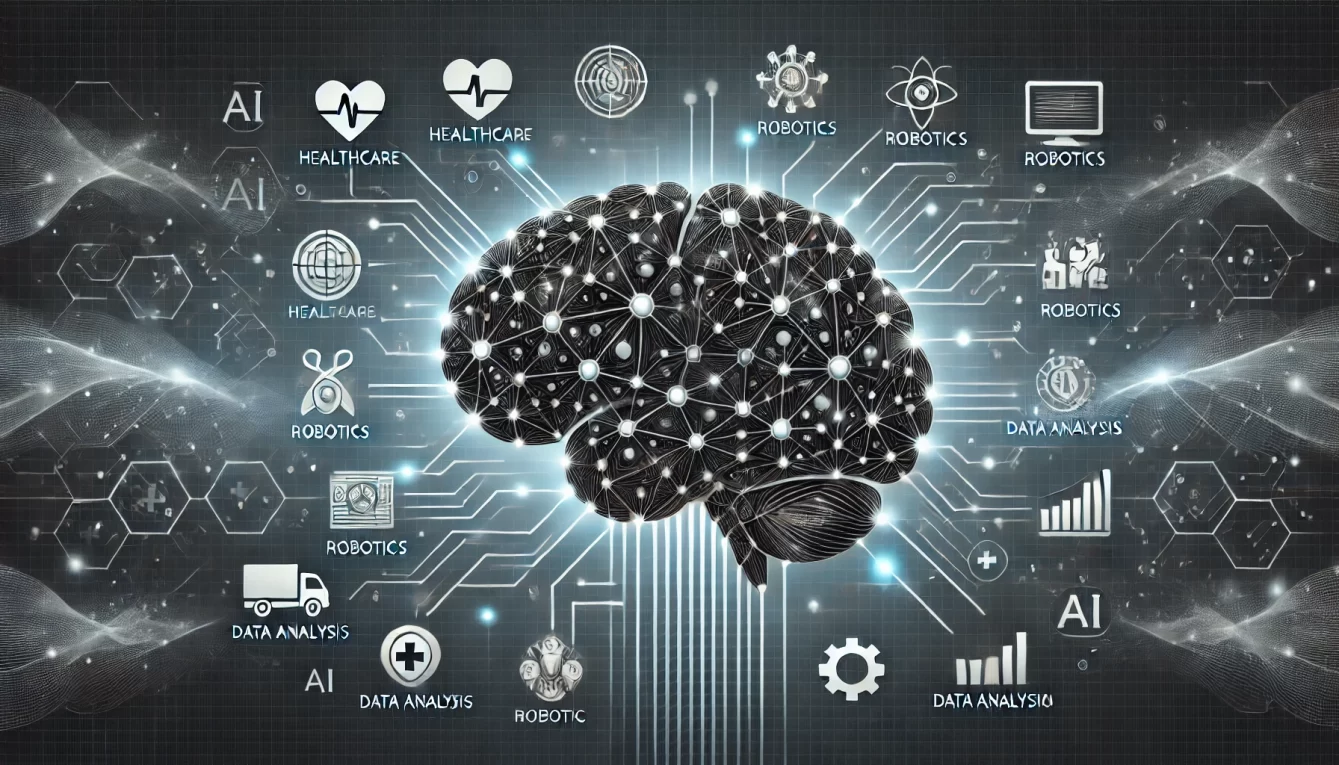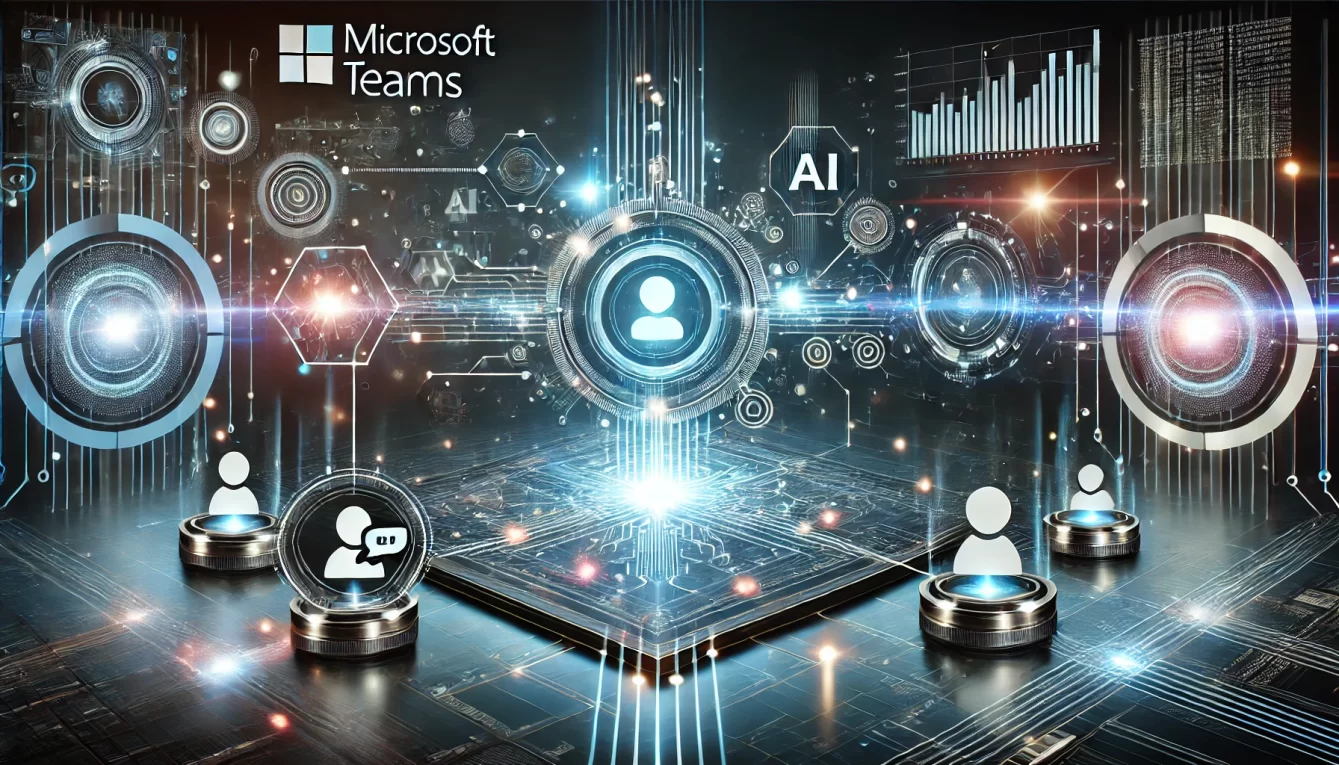Outline: The Evolution of AI
| Main Topic | Subtopics |
|---|---|
| 1. Introduction to Artificial Intelligence | Definition and scope of AI |
| Importance and relevance in today’s world | |
| 2. Early Concepts and Theories | Ancient myths and early thoughts on AI |
| The Dartmouth Conference of 1956 and its significance | |
| 3. The Pioneers of AI | Alan Turing and the Turing Test |
| John McCarthy and the coining of “Artificial Intelligence” | |
| Marvin Minsky and early AI research | |
| Claude Shannon and information theory | |
| 4. The First Wave of AI (1950s-1970s) | Development of symbolic AI and logic-based systems |
| Early AI programs: ELIZA, SHRDLU | |
| Challenges and limitations during this period | |
| 5. The AI Winter (1970s-1980s) | Overpromises and the subsequent disillusionment |
| Funding cuts and reduced interest in AI | |
| Notable progress despite challenges | |
| 6. The Emergence of Machine Learning (1980s-1990s) | Shift from rule-based systems to learning-based approaches |
| Development of neural networks and backpropagation | |
| Successes in AI: Speech recognition, expert systems | |
| 7. The Second AI Winter (Late 1980s-1990s) | Renewed skepticism and funding challenges |
| Impact on AI research and development | |
| 8. The Rise of Big Data and Deep Learning (2000s-Present) | The role of big data in AI advancement |
| Deep learning: breakthroughs and applications | |
| The rise of AI in industry and everyday life | |
| 9. AI and Natural Language Processing (NLP) | Development of NLP and its importance in AI |
| Milestones: GPT, BERT, and other advanced models | |
| AI in translation, sentiment analysis, and chatbots | |
| 10. AI in Robotics and Autonomous Systems | Robotics and AI: Synergies and developments |
| Autonomous vehicles and drones | |
| Ethical considerations in robotics | |
| 11. AI in Healthcare | AI applications in diagnostics, drug discovery, and personalized medicine |
| Case studies: IBM Watson, DeepMind’s AlphaFold | |
| Ethical and privacy concerns | |
| 12. Ethical Implications of AI | AI and job displacement |
| Bias in AI systems and its impact | |
| Ethical frameworks and guidelines for AI development | |
| 13. AI and Society | AI’s impact on social interactions and communication |
| The role of AI in education and learning | |
| AI in creative arts: Music, literature, and visual arts | |
| 14. The Future of AI | Predictions and trends in AI development |
| The potential of Artificial General Intelligence (AGI) | |
| Challenges and opportunities for the future | |
| 15. Conclusion | Recap of the evolution of AI |
| The ongoing journey and future prospects | |
| 16. Frequently Asked Questions (FAQs) | 1. What is the difference between AI, machine learning, and deep learning? |
| 2. How has AI evolved over the decades? | |
| 3. What are the most significant breakthroughs in AI? | |
| 4. What challenges has AI faced throughout its history? | |
| 5. How is AI shaping the future of various industries? | |
| 6. What are the ethical concerns surrounding AI? |
The Evolution of AI: A Comprehensive History
1. Introduction to Artificial Intelligence
Artificial Intelligence (AI) has evolved from a concept rooted in science fiction to a transformative force across numerous industries. It refers to the development of computer systems that can perform tasks typically requiring human intelligence, such as decision-making, visual perception, speech recognition, and language translation. AI’s impact today is profound, affecting everything from healthcare to transportation, entertainment, and beyond.
The journey of AI is a story of human ingenuity, persistence, and creativity. It’s a tale of how scientists and engineers have, over decades, strived to understand and replicate the human mind’s cognitive processes through machines. The importance of AI in today’s world cannot be overstated—it’s driving innovation, enabling new capabilities, and raising fundamental questions about the future of technology and society.
2. Early Concepts and Theories
The idea of artificial beings endowed with intelligence dates back to ancient history. Myths, such as the Greek tale of Pygmalion, reflect humanity’s longstanding fascination with creating life-like entities. However, it wasn’t until the mid-20th century that AI as a scientific field began to take shape.
The 1950s marked the genesis of modern AI. The Dartmouth Conference in 1956 is often cited as the birthplace of AI as a discipline. Organized by John McCarthy, Marvin Minsky, Nathaniel Rochester, and Claude Shannon, this conference introduced the term “Artificial Intelligence” and set the agenda for AI research. The aim was to explore the possibility of machines that could simulate aspects of human intelligence, such as problem-solving and learning.
3. The Pioneers of AI
Several key figures have significantly shaped the evolution of AI. Alan Turing, often considered the father of AI, proposed the idea of machines that could simulate any human intelligence. His Turing Test, developed in 1950, became a foundational concept for measuring a machine’s ability to exhibit human-like intelligence.
John McCarthy, who coined the term “Artificial Intelligence,” was instrumental in developing AI as a distinct field. He contributed to the creation of LISP, a programming language that became essential for AI research. Marvin Minsky, another pioneer, co-founded the MIT AI Lab and made substantial contributions to AI theory and robotics.
Claude Shannon, known as the father of information theory, laid the groundwork for AI by formalizing the concept of communication and information processing. His work influenced the development of algorithms that underpin modern AI.
4. The First Wave of AI (1950s-1970s)
The initial phase of AI research was characterized by the development of symbolic AI, which focused on encoding human knowledge in a machine-readable format. Researchers believed that by programming computers with a set of rules, they could mimic human intelligence. Early AI programs, such as ELIZA and SHRDLU, demonstrated the potential of symbolic AI.
ELIZA, developed in the 1960s by Joseph Weizenbaum, was an early natural language processing (NLP) program that simulated a conversation with a psychotherapist. SHRDLU, created by Terry Winograd, could understand and manipulate simple objects in a virtual environment based on user commands. These programs showcased the possibilities of AI but also highlighted its limitations, as they could only operate within very narrow domains.
5. The AI Winter (1970s-1980s)
The optimism of AI’s early years soon gave way to a period of disillusionment known as the AI Winter. Researchers and funders became frustrated by the slow progress and the overpromises made by AI proponents. Early AI systems, while impressive in controlled environments, struggled with real-world complexity. The limitations of symbolic AI, particularly its inability to handle ambiguity and incomplete information, became apparent.
As a result, funding for AI research dwindled, and many projects were abandoned. Despite these challenges, some researchers continued to make progress in areas like robotics and machine learning, laying the groundwork for future advances.
6. The Emergence of Machine Learning (1980s-1990s)
The 1980s and 1990s saw a shift from rule-based systems to machine learning, where computers learn from data rather than relying solely on pre-programmed rules. This approach proved more flexible and scalable, enabling computers to improve their performance over time as they processed more information.
Neural networks, a key component of machine learning, gained renewed interest during this period. The development of the backpropagation algorithm allowed for more effective training of neural networks, leading to significant improvements in tasks like speech recognition and image processing. Expert systems, which used AI to emulate the decision-making of human experts, also became popular in industries such as medicine and finance.
7. The Second AI Winter (Late 1980s-1990s)
Despite the advances in machine learning, AI faced another downturn in the late 1980s and 1990s. This period, sometimes referred to as the Second AI Winter, was marked by skepticism and reduced investment. The limitations of expert systems, which often required extensive manual input and struggled with adaptability, contributed to the decline.
However, this period also saw important developments that would later fuel AI’s resurgence. Advances in computing power, data storage, and algorithms, combined with the growth of the internet, set the stage for the next wave of AI innovation.
8. The Rise of Big Data and Deep Learning (2000s-Present)
The 2000s marked the beginning of a new era in AI, driven by the explosion of big data and the availability of powerful computing resources. As the volume of digital information grew exponentially, AI researchers found new opportunities to apply machine learning techniques to large datasets.
Deep learning, a subset of machine learning that uses multi
-layered neural networks, emerged as a particularly powerful tool. Deep learning algorithms proved highly effective at tasks such as image recognition, speech processing, and natural language understanding. Landmark achievements, such as the development of convolutional neural networks (CNNs) and recurrent neural networks (RNNs), fueled the rapid adoption of deep learning across various industries.
AI began to permeate everyday life, from virtual assistants like Siri and Alexa to recommendation systems on platforms like Netflix and Amazon. The rise of AI-powered applications in fields like finance, healthcare, and autonomous vehicles underscored the transformative potential of the technology.
9. AI and Natural Language Processing (NLP)
Natural Language Processing (NLP) has been a critical area of AI research, enabling machines to understand, interpret, and generate human language. The evolution of NLP has been marked by significant milestones, such as the development of BERT (Bidirectional Encoder Representations from Transformers) and GPT (Generative Pre-trained Transformer) models.
These models have revolutionized tasks like translation, sentiment analysis, and conversational AI. GPT, in particular, has garnered widespread attention for its ability to generate coherent and contextually relevant text, demonstrating the potential of AI in creative and communication-driven tasks.
AI’s ability to process and analyze large volumes of text data has also led to advancements in areas such as search engines, content generation, and customer service chatbots.
10. AI in Robotics and Autonomous Systems
Robotics and AI have a symbiotic relationship, with AI providing the cognitive abilities necessary for robots to perform complex tasks. Advances in AI have enabled the development of autonomous systems, such as self-driving cars and drones, which can navigate and make decisions in dynamic environments.
The integration of AI in robotics has led to significant progress in fields like manufacturing, logistics, and space exploration. Robots equipped with AI can perform tasks that are dangerous, repetitive, or require precision beyond human capabilities.
However, the rise of autonomous systems has also raised ethical concerns, particularly regarding safety, accountability, and the potential displacement of human workers.
11. AI in Healthcare
AI has made remarkable contributions to healthcare, offering new tools for diagnosis, treatment, and personalized medicine. Machine learning algorithms can analyze medical images, predict patient outcomes, and identify potential drug candidates, accelerating the pace of medical research and improving patient care.
Notable AI applications in healthcare include IBM Watson, which has been used to assist in cancer diagnosis and treatment planning, and DeepMind’s AlphaFold, which has made significant strides in predicting protein structures.
While AI holds great promise for improving healthcare, it also raises ethical and privacy concerns, particularly regarding the handling of sensitive patient data and the potential for algorithmic bias in medical decision-making.
12. Ethical Implications of AI
As AI continues to evolve, it presents several ethical challenges that must be addressed to ensure responsible development and deployment. One of the most pressing concerns is the impact of AI on employment. While AI has the potential to create new jobs, it also threatens to displace workers in industries such as manufacturing, transportation, and customer service.
Bias in AI systems is another critical issue, as algorithms trained on biased data can perpetuate and even amplify existing inequalities. Ensuring fairness, transparency, and accountability in AI systems is essential to prevent harm and build public trust.
Ethical frameworks and guidelines for AI development, such as those proposed by organizations like the IEEE and the European Union, aim to address these concerns and promote the responsible use of AI technology.
13. AI and Society
AI’s influence extends beyond the realms of technology and industry, shaping social interactions, communication, and culture. AI-powered social media algorithms influence what content users see, affecting public discourse and shaping opinions. The rise of AI in education is transforming how students learn, offering personalized learning experiences and new tools for educators.
In the creative arts, AI is being used to generate music, literature, and visual art, pushing the boundaries of human creativity and raising questions about the nature of authorship and originality.
The integration of AI into daily life has profound implications for society, requiring careful consideration of the social, cultural, and ethical dimensions of AI technology.
14. The Future of AI
Looking ahead, the future of AI is filled with both promise and uncertainty. As AI continues to advance, researchers are exploring the potential of Artificial General Intelligence (AGI), a form of AI that could perform any intellectual task that a human can do. While AGI remains a distant goal, its realization could have transformative effects on society, economy, and culture.
The future of AI will also be shaped by the challenges and opportunities that arise as the technology matures. Issues such as data privacy, algorithmic bias, and the regulation of AI systems will be central to the ongoing development of AI.
Predictions for the future of AI include its integration into more aspects of daily life, the continued evolution of AI-driven industries, and the emergence of new ethical and societal questions that will need to be addressed.
15. Conclusion
The evolution of AI is a story of human ambition, ingenuity, and persistence. From its early beginnings as a theoretical concept to its current status as a transformative technology, AI has made remarkable progress and continues to push the boundaries of what is possible. As we look to the future, the ongoing development of AI promises to bring both exciting opportunities and significant challenges, requiring careful consideration and responsible stewardship.
16. Frequently Asked Questions (FAQs)
1. What is the difference between AI, machine learning, and deep learning?
AI is a broad field that encompasses the development of machines capable of performing tasks that typically require human intelligence. Machine learning is a subset of AI focused on creating algorithms that enable machines to learn from data. Deep learning is a further subset of machine learning that uses neural networks with multiple layers to model complex patterns in data.
2. How has AI evolved over the decades?
AI has evolved from early symbolic approaches, where machines were programmed with explicit rules, to modern machine learning and deep learning techniques, where machines learn from data. The evolution has been marked by periods of rapid progress, setbacks (AI winters), and breakthroughs, such as the rise of big data and deep learning.
3. What are the most significant breakthroughs in AI?
Some of the most significant breakthroughs in AI include the development of the Turing Test, the creation of the first AI programs like ELIZA, the advent of machine learning and neural networks, the rise of deep learning, and the success of AI in applications like image and speech recognition, natural language processing, and autonomous systems.
4. What challenges has AI faced throughout its history?
AI has faced several challenges, including technical limitations, overpromises leading to periods of disillusionment (AI winters), the difficulty of handling real-world complexity, ethical concerns, and societal impacts such as job displacement and bias in AI systems.
5. How is AI shaping the future of various industries?
AI is transforming industries by automating tasks, improving efficiency, and enabling new capabilities. In healthcare, AI aids in diagnostics and drug discovery; in finance, it enhances fraud detection and algorithmic trading; in transportation, it powers autonomous vehicles. AI’s impact is also felt in areas like entertainment, retail, and manufacturing.
6. What are the ethical concerns surrounding AI?
Ethical concerns in AI include the potential for job displacement, bias in AI algorithms, privacy issues related to the handling of personal data, and the accountability of AI systems in decision-making. Ensuring ethical AI development requires addressing these concerns through responsible practices, transparency, and regulatory oversight.










